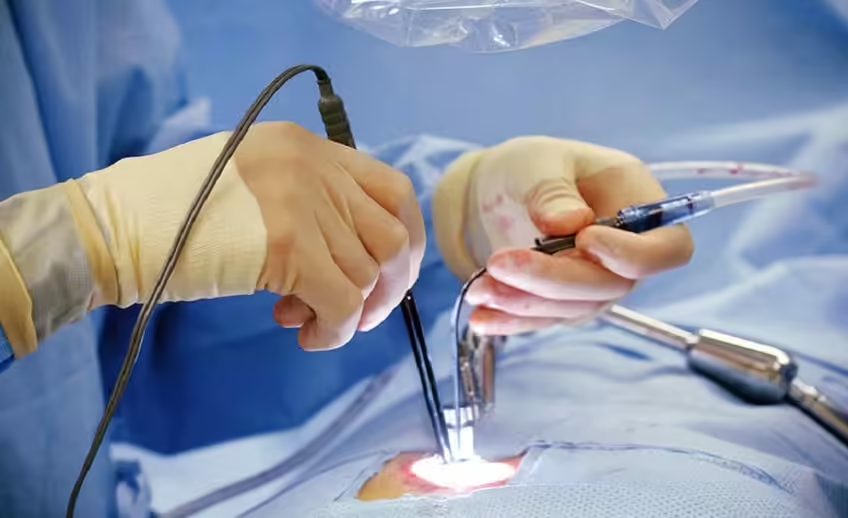Services
Explore our comprehensive services. From diagnostics to treatment, we’re here for you every step of the way. Discover excellence in care tailored to your needs.
Expert Spine Care Services at Best Spine Hospital in Indore
Minimal Invasive Spine Surgery
Minimal invasive spine surgery is a modern technique that uses small incisions and specialized tools to treat spine conditions with reduced trauma to surrounding tissues. This approach leads to quicker recovery, less post-operative pain, and shorter hospital stays.
- Smaller incisions with less tissue damage.
- Reduced recovery time and post-operative pain.
- Advanced tools and imaging for precision.
- Often performed as an outpatient procedure.
- Minimizes the risk of complications.

Endoscopic Spine Surgery
Endoscopic spine surgery is a minimally invasive procedure where a small camera (endoscope) is used to visualize and treat spine problems. This technique reduces tissue disruption and promotes faster recovery, making it ideal for patients with herniated discs, spinal stenosis, and similar conditions.
- Uses a small endoscope for visualization.
- Minimal tissue disruption and faster recovery.
- Effective for herniated discs and spinal stenosis.
- Outpatient procedure with quick return to normal activities.
- Less scarring and post-operative discomfort.

Microscope-Assisted Spine Surgery
Microscope-assisted spine surgery employs a high-powered surgical microscope to improve visualization during complex spinal procedures. This approach enhances precision, allowing for safer and more accurate surgeries in delicate areas of the spine.
- High-powered microscope improves precision.
- Ideal for complex and delicate spine surgeries.
- Enhances safety and accuracy.
- Reduces risk of complications.
- Promotes better post-surgical outcomes.

Spine Deformity Correction
Spine deformity correction involves the surgical treatment of abnormal curvatures such as scoliosis or kyphosis. The goal is to restore alignment and balance to the spine, improving function and relieving pain.
- Corrects abnormal spinal curvatures.
- Improves posture, function, and mobility.
- Reduces pain associated with deformities.
- Restores balance and alignment.
- Tailored to each patient’s specific needs.

Spine Tumor Surgery
Spine tumor surgery involves the removal of benign or malignant tumors affecting the spine or surrounding tissues. This surgery helps alleviate symptoms such as pain, neurological deficits, and loss of function.
- Removes benign or malignant spine tumors.
- Alleviates pain and neurological symptoms.
- Restores function and spinal stability.
- Uses advanced imaging for precise removal.
- Aims to improve the patient’s quality of life.

Pain Management Injections
Pain management injections target areas of pain and inflammation in the spine to provide relief. These injections are often used for conditions like sciatica, herniated discs, and arthritis, reducing pain and improving mobility.
- Targets pain and inflammation in the spine.
- Provides relief from conditions like sciatica and arthritis.
- Reduces pain and enhances mobility.
- Minimally invasive, outpatient procedure.
- Offers fast-acting relief with minimal side effects.

Spine Fracture Management
Spine fracture management includes surgical or non-surgical treatments to stabilize and repair fractured vertebrae. The goal is to restore spinal integrity and prevent further injury or complications.
- Stabilizes and repairs spinal fractures.
- Prevents further injury or complications.
- Can be managed with or without surgery.
- Aims to restore mobility and reduce pain.
- Tailored to the severity and location of the fracture.

Hip and Knee Replacement
Hip and Knee Replacement Surgery involves replacing worn-out or damaged joints with prosthetic implants. These surgeries relieve pain, improve mobility, and restore joint function in patients with severe arthritis or joint damage.
- Replaces damaged hip or knee joints with implants.
- Relieves pain from arthritis or injury.
- Restores mobility and joint function.
- Long-lasting results with improved quality of life.
- Tailored to each patient’s specific condition.

Non-Operative Management of Spine Problems
Non-operative management of spine problems focuses on conservative treatments such as physical therapy, medications, and lifestyle changes. The goal is to manage pain, improve function, and avoid surgery whenever possible.
- Focuses on conservative, non-surgical treatments.
- Includes physical therapy, medications, and lifestyle modifications.
- Aims to relieve pain and improve spine function.
- Helps avoid surgery whenever possible.
- Personalized treatment plans for each patient.

